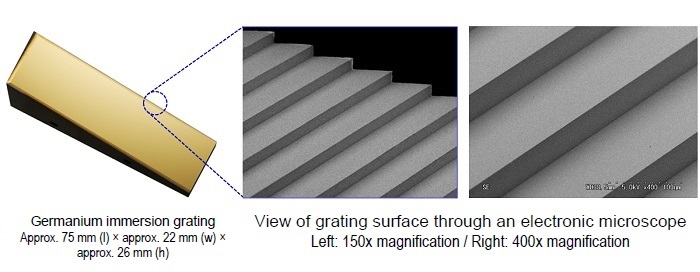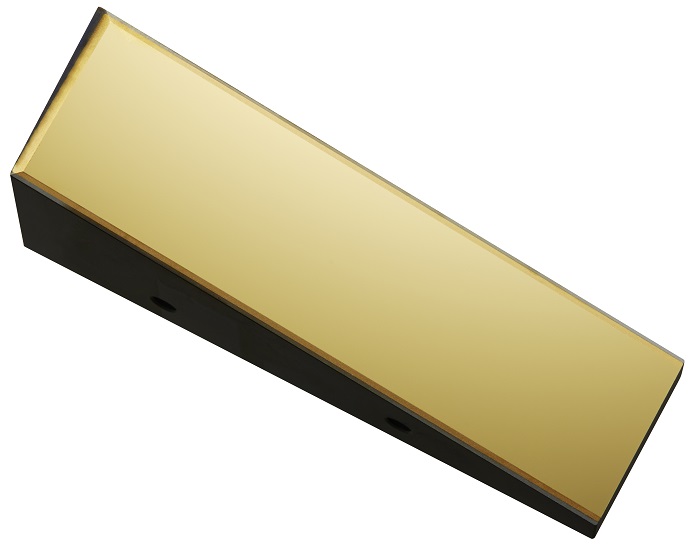TOKYO, August 6, 2015—Canon Inc. announced today the successful development of the world’s first* practical-use germanium immersion grating,1 making possible a significant reduction in the size of infrared spectrometers used in astronomical and other applications.
Through the application of the Canon-developed germanium immersion grating, spectrometers could be drastically reduced to approximately 1/64th their current volume while maintaining the same levels of performance as the high-dispersion infrared spectrometers now employed in large telescopes. This, in turn, could support the launch of satellites equipped with high-performance spectrometers and make possible spectrometers for next-generation large astronomical telescopes that are smaller in size or enable higher levels of performance than those employed in astronomical telescopes currently in operation. This achievement, by facilitating increased efficiency in infrared spectrographic observations for the detection of organic matter or molecules related to life, would contribute to explorations into the history of the universe and the beginning of life.
Canon is now prepared to supply its germanium immersion gratings as products and intends to market them to astronomical observatories and research institutes for use.

Development success realized through Canon ultra-precision processing technology
While the benefits of fabricating immersion diffractive gratings were realized long ago, because the transmissive material employed in the field of astronomy for infrared frequencies (from 1 to 30 μm2) is semiconductor material, it is extremely brittle. As such, attempts to achieve a surface of virtually perfect regularity with grooves measuring only a few nanometers3 proved difficult. In response to this challenge, Canon applied its own ultra-precision processing technology, developed through the manufacture of precision components, to single-crystal germanium. As a result, the Company succeeded in developing a practical germanium immersion grating with 100 μm grooves at regular intervals measuring just a few nanometers.
Canon will host a presentation on its germanium immersion grating at the SPIE Optics + Photonics 2015 symposium, to be held from August 9 to 13, 2015, in San Diego, California, U.S.A.
Canon, through its technologies, will continue contributing to the development of the world’s scientific technologies and natural science.
* Among usable germanium immersion gratings measuring 5 μm or less
1: Germanium immersion grating refers to a spectrographic optical element capable of covering the germanium transmissive frequency range of the infrared spectrum between approximately 3 and 11μm. Compared with conventional reflective diffractive gratings, immersion gratings make possible higher dispersion relative to the refractive index
2:1 μm (micrometer) is one-millionth of a meter (or one-thousandth of a millimeter)
3: 1 nm (nanometer) is one-billionth of a meter (or one-thousandth of a micrometer)
Setting sights on immersion gratings employing materials other than germanium
Aside from its germanium immersion grating, Canon also successfully developed the world’s first cadmium zinc telluride* immersion grating, capable of covering a broader spectrum and longer wavelengths of infrared light. In the future, the Company intends to not only create immersion gratings with other infrared semiconductor materials, but also leverage its high-precision processing technologies to realize improvements in the performance of conventional reflective diffractive gratings.
Through the addition of immersion diffractive gratings made from various materials to the Company’s lineup, Canon aims to facilitate the analysis of substances of differing refractive indexes and wavelengths, enabling a wide range of applications for infrared spectroscopy, not only in the field of astronomy, but also in the fields of science and medicine.
* Cadmium zinc telluride (CdZnTe) is a type of semiconductor material capable of transmitting infrared rays













